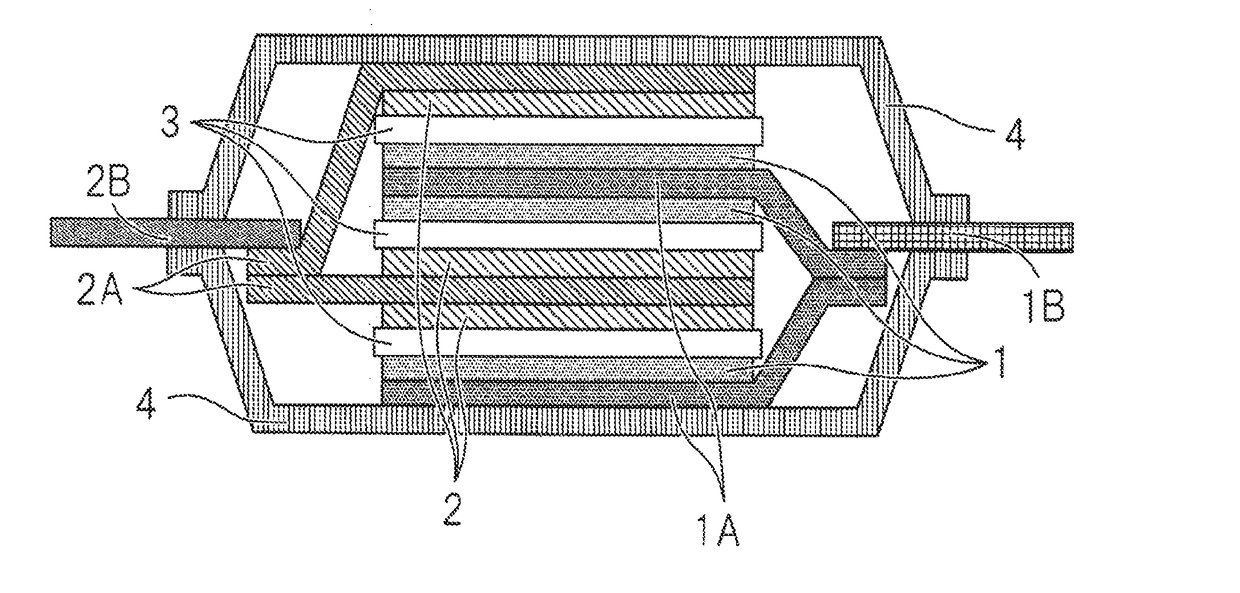Hydrofluoroether compound, nonaqueous electrolyte solution and lithium ion secondary battery
- Summary
- Abstract
- Description
- Claims
- Application Information
AI Technical Summary
Benefits of technology
Problems solved by technology
Method used
Image
Examples
synthesis example 1
[0108]Synthesis of a hydrofluoroether (HFE-1) in which in the formula (1), R1 was a 2,2-difluoroethyl group.
[0109]2.269 g of potassium hydroxide was dispersed in 50 ml of tetrahydrofuran, and 3.084 g of 2,2-difluoroethanol was dropped under ice cooling. After 30 min, 10 g of perfluoropropoxyethylene was dropped, and the resulting mixture was stirred for 1 hour. Thereafter, the reaction mixture was stirred at room temperature for one night and injected in water; and an organic layer was washed with water until a water layer became neutral and thereafter dried with magnesium sulfate. The organic layer was filtered by a filter and distilled and refined to thereby obtain 9.29 g of a target hydrofluoroether (HFE-1) (colorless transparent liquid, boiling point: 33° C. / 25 mmHg, yield: 71%). The measurement result of the obtained hydrofluoroether (HFE-1) by 1H-NMR (CDCl3) was as follows: δ were 5.94 (tt, 1H), 5.93 (dd, 1H) and 4.14 (dt, 2H).
synthesis example 2
[0110]Synthesis of a hydrofluoroether (HFE-2) in which in the formula (1), R1 was a 2,2,3,3-tetrafluoropropyl group
[0111]A target hydrofluoroether (HFE-2) (colorless transparent liquid, boiling point: 46° C. / 25 mmHg, yield: 65%) was synthesized as in Synthesis Example 1, except for using 4.964 g of 2,2,3,3-tetrafluoro-1-propanol in place of using 3.084 g of 2,2-difluoroethanol used in Synthesis Example 1. The measurement result of the obtained hydrofluoroether (HFE-2) by 1H-NMR (CDCl3) was as follows: δ were 5.95 (dt, 1H), 5.89 (tt, 1H) and 4.32 (t, 2H).
synthesis example 3
[0112]Synthesis of a hydrofluoroether (HFE-3) in which in the formula (1), R1 was a 2,2,2-trifluoroethyl group
[0113]A target hydrofluoroether (HFE-3) (colorless transparent liquid, boiling point: 95 to 96° C., yield: 80%) was synthesized as in Synthesis Example 1, except for using 3.76 g of 2,2,2-trifluoroethanol in place of using 3.084 g of 2,2-difluoroethanol used in Synthesis Example 1. The measurement result of the obtained hydrofluoroether (HFE-3) by 1H-NMR (CDCl3) was as follows: δ were 5.96 (dt, 1H) and 4.29 (q, 2H).
PUM
| Property | Measurement | Unit |
|---|---|---|
| Percent by volume | aaaaa | aaaaa |
| Percent by volume | aaaaa | aaaaa |
| Fraction | aaaaa | aaaaa |
Abstract
Description
Claims
Application Information
 Login to View More
Login to View More - R&D
- Intellectual Property
- Life Sciences
- Materials
- Tech Scout
- Unparalleled Data Quality
- Higher Quality Content
- 60% Fewer Hallucinations
Browse by: Latest US Patents, China's latest patents, Technical Efficacy Thesaurus, Application Domain, Technology Topic, Popular Technical Reports.
© 2025 PatSnap. All rights reserved.Legal|Privacy policy|Modern Slavery Act Transparency Statement|Sitemap|About US| Contact US: help@patsnap.com



